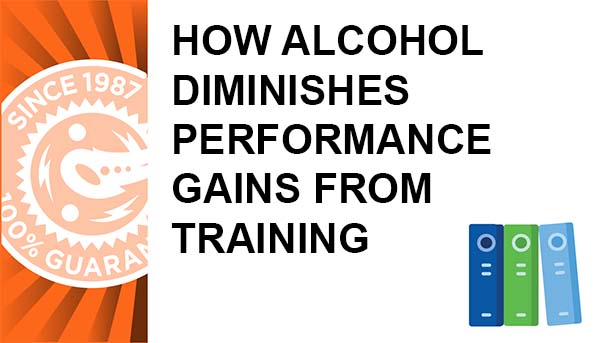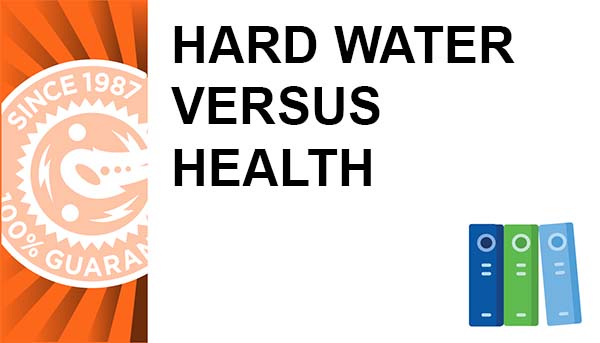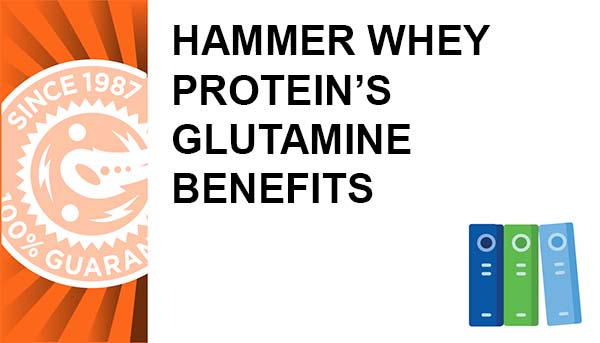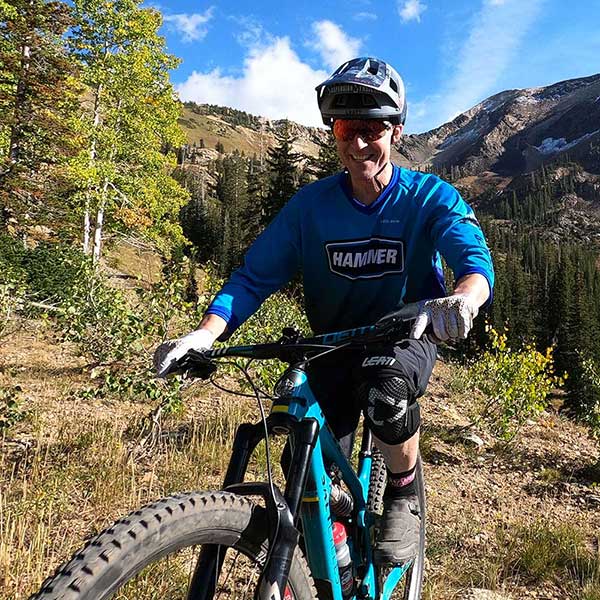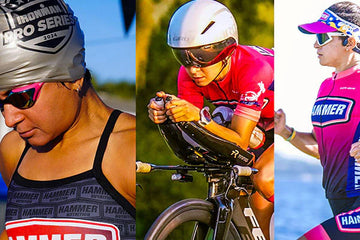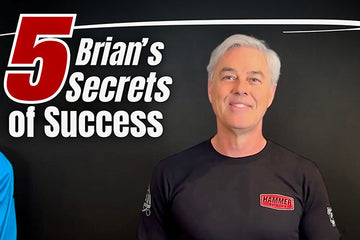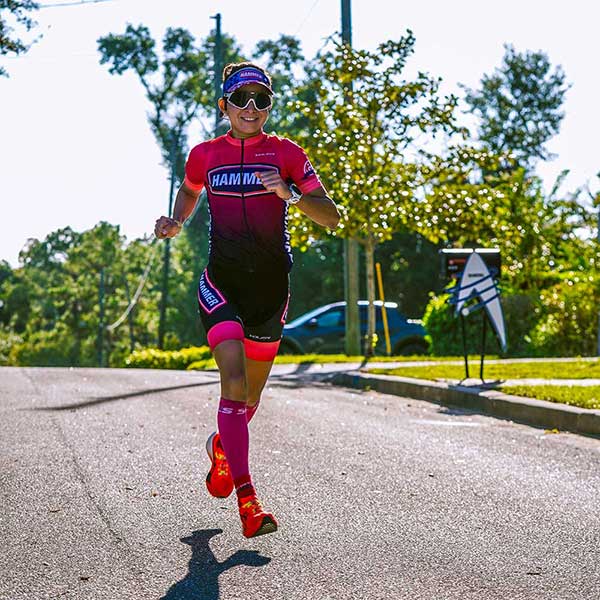By William Misner Ph.D.
A frequent question is "What diet improves performance?" Though this query needs to be revised to: "What diet inhibits performance?"
An oversimplified answer is to replace every moiety lost due to energy expense immediately following exercise. Replacing fuels (carbohydrates, proteins, and healthy fats) fluid, vitamins, and electrolytes, must be executed so that recovery occurs rapidly translating into improved performance. The most frequent performance-inhibiting "MENU MISTAKES" were recorded between 1996-2005 based on the computerized dietary analysis of 70 endurance athletes.
They are concluded as follows:
- HYDRATION: Drank too little prior to workouts or drank too much during workout. Resolution - Drink 0.5 fluid ounces per pound body weight total each day prior to workout and consume 24 fluid ounces per hour (=/- 4 fluid ounces) in divided doses during workouts.
- SODIUM: Consumed too much sodium (packaged processed food or added salt to food). Recommendation - Add no salt to food and restrict the use of high sodium packaged or processed foods during training. Increase raw fruits and vegetables to menu plan. During exercise, limit sodium intake to not less than 200 mg per hour or not more than 600 mg per hour taken with 240-280 calories carbohydrates. Persons with typical high sodium diets should utilize 300-600 mg sodium-rich electrolytes with 240-280 calories in 25-30 fluid ounces fluid/hour, while those who limit sodium intake should consume 200-300 mg sodium/hour during exercise.
- FAT: Consumed too much saturated fat from red meat, poultry, and dairy. Recommendation - Reduce or limit all meat portions to the size of a fist and consume no more than one portion every 3 days. Substitute good fats from fish, fish oil, flax oil, or olive oil. The requirement for fat is 2-6 grams Omega-3 and 6-9 grams Omega-6 fatty acids per day. Trans fats and saturated fats should be limited.
- PROTEIN: Subjects do not know how much of what kind of protein to use during training. Recommendation - During speed or strength training, daily protein required is 1.7-grams protein per 2.2 pounds (kg) bodyweight. Following endurance workouts, the requirement is 1.4-grams protein per 2.2 pounds (kg) bodyweight. Three protein sources are "complete" based on their essential amino acid profile: Whey, Soy, and Egg Whites. Whey protein generates the highest biological value impact on muscle growth, making it the protein-of-choice following strength or speed workouts. Soy protein produces the least blood serum cholesterol levels with cardiovascular implications following prolonged endurance training. By combining foods Legumes & Grains, Legumes & Seeds/Nuts, Vegetables& Legumes, a "complete" essential amino acid profile occurs without excess fat or sodium produced by consuming too much processed-packaged foods, meats, or processed dairy foods.
- CARBOHYDRATE: During sedentary meals, athletes eat too much processed carbohydrate, way too much simple sugar. If a carbohydrate on the ingredients list ends in "-ose," it is either a simple sugar or a sugar alcohol. During exercise, athletes consume too much simple sugared gels, drinks, or energy bars high in (Ingredients ending in "-ose"). Recommendation - Reduce all processed carbohydrates from sedentary menu. Consume no calories 3-hours prior to exercise. During exercise, limit fuel intake to 240-280 calories per hour from long chain carbohydrates with no added simple sugar. After a prolonged muscle glycogen-depletion exercise session, consume in divided dose 2-4 grams long chain carbohydrates per kilogram body weight. Carbohydrate transition for muscle glycogen following a workout is best absorbed in a window of opportunity lasting from 0-120 minutes (ideal timing is first 30 minutes).
- BALANCE MENU: Most of the 70 athletes' diets analyzed consumed too much one food group, which raised their body weight 5-20 pounds in the "off" season. Eating too much raises body mass index unnecessarily. When Lance Armstrong recovered from cancer, he adopted a training table to replace only what the workout burned. This menu supported training and lowered his BMI to a "fighting weight" demonstrated by 7 Tour de France wins noting the importance balance menu. Recommendation - Limit carbohydrates intake to 55-65% from whole fruits, vegetables, and whole grain cereals at no more than 2 grams per kilogram body weight per meal or up to 6 grams carbohydrate per kilogram bodyweight daily. Limit saturated meat and dairy portions to once every 3 days (fish is a better choice with the fat as good fat). Protein synthesis is nutritionally enhanced by Whey protein during strength or speed training, while Soy protein supports endurance-training goals most effectively. The total daily requirement is 1.7-grams per kilogram bodyweight protein for speed and strength or 1.4-grams per kilogram bodyweight.
TOTAL MACRONUTRIENT REQUIREMENT BY BODYWEIGHT (Grams/day)
WEIGHT LBS |
PROTEIN |
CARBOHYDRATE |
FAT |
100 |
64-77 |
90-270 |
25-45 |
120 |
77-94 |
110-330 |
26-55 |
140 |
90-109 |
128-384 |
30-60 |
160 |
102-124 |
146-438 |
35-65 |
180 |
115-140 |
164-492 |
40-70 |
200 |
127-155 |
182-546 |
46-76 |
220 |
140-170 |
200-600 |
50-80 |
These estimates are maintain sedentary bodyweight and may not account for exercise expense.
CALORIES SPENT BY SPORT BY BODYWEIGHT (ESTIMATE)
For every mile run, ridden, or swum, the following more carbohydrate calories are needed: for running = 0.653 calories per pound per mile, for cycling = 0.280 calories per pound per mile, and for swimming = 2.93 calories per pound per mile.
TRAINING TABLE: A PREFERRED FOOD LIST
PROTEIN: Whey Protein Isolates, Soy Protein Isolates, Egg Whites, Salmon, Sardines, Mackerel, Herring, Trout, Wild Game; limit lean red meat and skinless poultry breast to once every 3-5 days.
CARBOHYDRATE: Potatoes, Bananas, Dates, Corn, Kidney Beans, Black Beans, Chickpeas, Garbanzo Beans, Brown Rice, Whole Wheat Flour, Whole Wheat Pasta, Barley, Whole Wheat Bread, Quinoa, Millet, Kasha, Oat Bran, Oatmeal, And Buckwheat. Cereals recommended are Oatmeal, Quaker Multigrain, Oat Bran, Cheerios, Granola, Muesli, Grape-Nuts, Nutrigrain, Raisin Bran, & Shredded Wheat.
FAT: Salmon Oil (DHA & EPA), Flax Seed Oil, Flax Seeds, Salmon, Sardines, Mackerel, Herring, Trout, Nuts, Seeds, Olive Oil, Walnuts, beans.
RESTRICTED FOOD LIST: All packaged-processed foods, fast foods, cooked foods, simple sugars, syrups, cakes, cookies, synthetic sweeteners, and excessive use of highly saturated fats from animal meats, poultry, or dairy byproducts. Meat portions should be limited to the size of your fist during speed or strength training.
MENU-SPECIFIC APPLICATIONS
How do you know if your hydration is inadequate or excessive? Body weight should be 2% less after a workout lasting 2 hours or longer. From muscle glycogen metabolization during exercise, 2 liters (+/- 0.5 liter) is water weight lost in expiration or perspiration during exercise. If body weight is 1% less or -0- or +1% heavier, over-hydration resulted requiring less fluid intake. If post-exercise body weight is - 3% or greater dehydration as resulted requiring more fluids. Salt stains are indicative of heavy fluid loss and unresolved elevated core body temperatures. Urine color should be light yellow to clear. Dark yellow is an indication of dehydration. No urine voiding for 2 hours or longer may be the first sign of kidney shut down due to progressive dehydration. I should be noted there is an upper heat index limit the body cannot adapt, leading to irresolvable performance-limiting dehydration consequences. This may be avoidable. Heat index adaptation requires at least 10 training day's exposure before performance potential is reached.
How do you know if sodium intake is deficient or excessive? Sodium overload typically shows up noticeably as swelling in hands, feet, ankles, face, and eyes. Sodium deficiency symptoms appear in the stomach as poor absorption, rumbling, bloating, flatulence, diarrhea, vomiting, and perceived malaise. Taking an hourly sodium intake of 200-600 mg with 240-280 calories carbohydrate in 3-4 evenly divided doses resolves issues related to sodium adequacy. Most Americans consume and store 6000-8000 mg excess sodium. In high heat index, that sodium level will last 4 hours with no sodium intake. However, since the human body tends to lose sodium faster than fluids during hyperthermic exposure, it is a preventative measure to replace sodium with fluids in order to avoid hyponatremia, low or diluted serum sodium, a medical emergency and performance-ending circumstance.
How do I determine if my diet contains the right amount of fat and protein? Skin-fold measures every 6 weeks show the progress of fat gain or fat loss more than actual body weight. Two macronutrient sources add fat weight storage:
- Excess Fat (3% of all fat calories are metabolized before stored)
- Excess Carbohydrate (27% of all carbohydrate calories are metabolized before stored as glycogen or fat)
Protein adequacy may be assessed through blood tests for nitrogen balance from the physician. There is another "just-as-good" noninvasive home test. Muscle tissue weighs double (per volume) as fat tissue. If body weight increases, strength & speed performance increases, wit skin-fold fat measures are decreased, then the athlete may conclude that their protein intake is adequate.
What are the contraindicating signs and symptoms from eating too much processed sugar or carbohydrate? Approximately 70-90 minutes after eating, a blood sugar crash results producing fatigue, mood swing, depression, and an increased appetite that is unsatisfied. Increased body fat occurs in the stomach and hips and will also show in skin-fold body fat measures taken every 4-6 weeks. Satiation should last 4 hours after meals; if absent, the blood sugar response from the previous meal may reflect too much carbohydrate consumed.
[1] Director Research and Product Development, EMG, Whitefish, Montana, 1-800336-1977.
